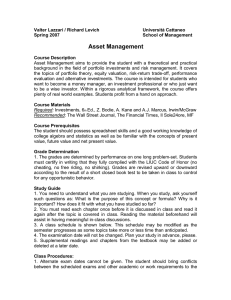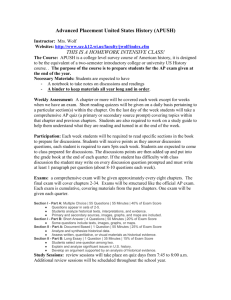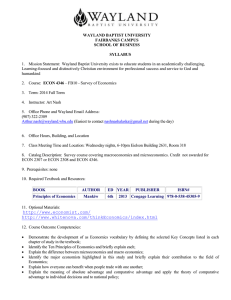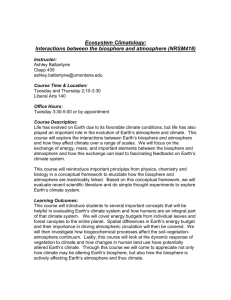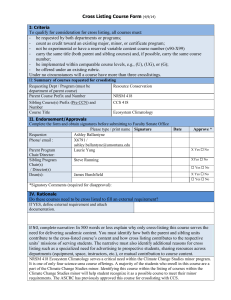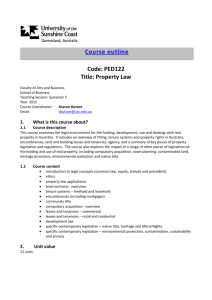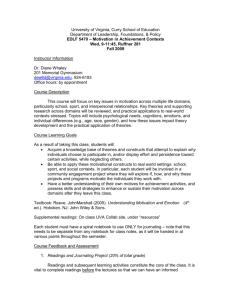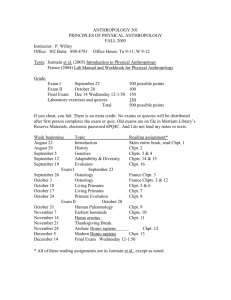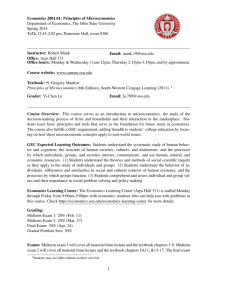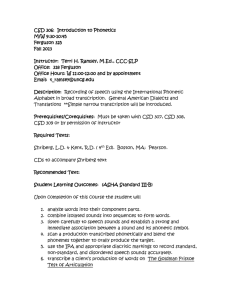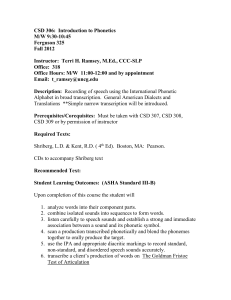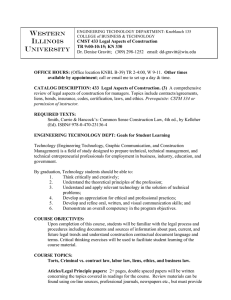Study outline for deterministic CWE
advertisement
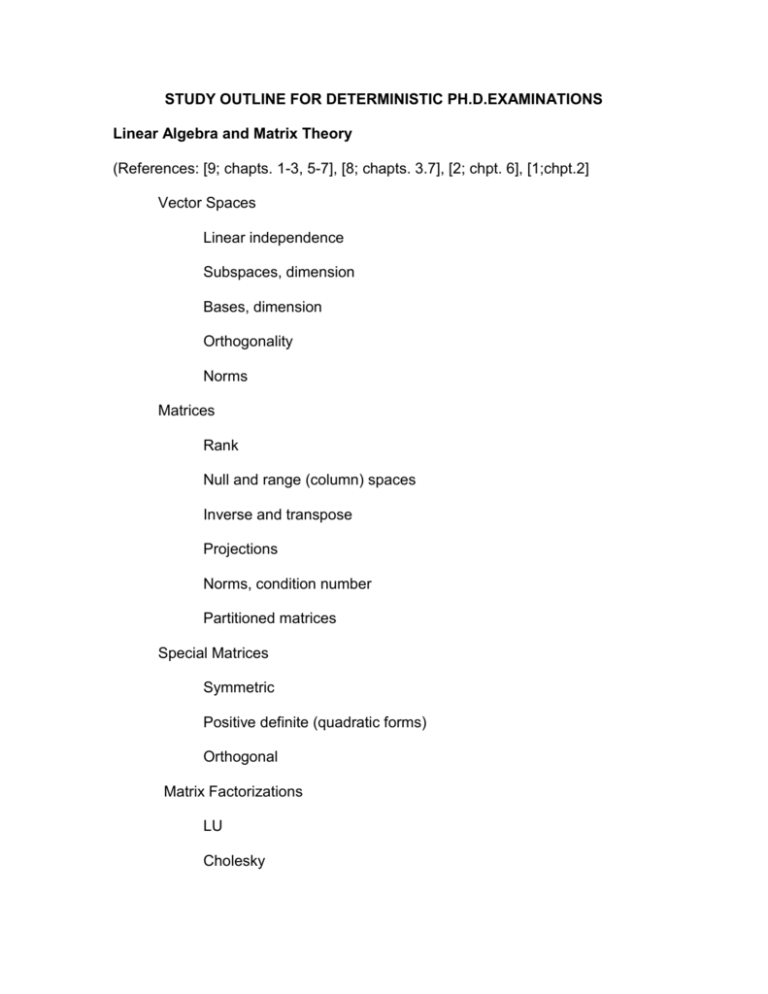
STUDY OUTLINE FOR DETERMINISTIC PH.D.EXAMINATIONS Linear Algebra and Matrix Theory (References: [9; chapts. 1-3, 5-7], [8; chapts. 3.7], [2; chpt. 6], [1;chpt.2] Vector Spaces Linear independence Subspaces, dimension Bases, dimension Orthogonality Norms Matrices Rank Null and range (column) spaces Inverse and transpose Projections Norms, condition number Partitioned matrices Special Matrices Symmetric Positive definite (quadratic forms) Orthogonal Matrix Factorizations LU Cholesky QR Solving Linear systems Gaussian elimination Least squares Iterative methods Eigenvalues and Eigenvectors Definitions Eigenspaces Properties for symmetric matrices Analysis (References: [8; chpts. 3], [1; chpt. 2], [3; chpt. 5], [6; chpt. 8, Appendices A, B], [4; chpts. 1-3], [7]) Mappings from R^n to R^m Continuity Differentiability Gradient Hessian Jacobian Taylor series with error terms Inverse and implicit function theorems Geometry for m = 1 Hyperplanes Polyhedra Level sets Descent direction Feasible direction Convexity Convex sets Convex functions Algorithms Convergence Newton’s method Optimization Linear Programming (References: [8; chpts. 1-10], 2; part I], 1, chpts. 1-6]) Formulations Optimality conditions Duality Dual theorems Farkas’ lemmas and equivalents Complementary slackness Sensitivity Analysis Ranging of parameters Adding constraints and variables Changes in solution and objective value Parametric programming Simplex algorithm Basis and basic feasible solutions Tableaus, dictionaries and pivoting Phase I Unboundedness, infeasibility, and degeneracy Revised simplex method Upper – bound simplex method Column generation Dual simplex method Networks (References: [8;chpts. 13], [2; Part III], [1; chpts. 9-10], [10; chpts. 6,7]), [11, chpts 6, [11, chpt. 9.2] Formulations Transportation and assignment Transshipment Maximum flow Shortest path linear programs Network simplex method Associated graph objects (trees, cycles, etc.) Min. cost flows Dynamic Programs (Reference: [5; chpts. 8-10]) Formulations Inventory models Production models Optimality conditions Recursion equations Solution Integer Programs (Reference: [10; chpts. 13]), [12] Formulations Branch and bound algorithm: node-selection strategies facility location models: setcovering, preprocessing capacitated facility location, traveling salesman problem References 1. Baxaara, M., Jarvis, J., Sherali, H., Linear Programming & Network Flows, John Wiley & Sons, 1990 2. Chvatal, V., Linear Programming, W. H. Freeman, 1985. 3. Dennis, J., Schnabel, R., Numerical Methods for Unconstrained Optimizaiton and Non-liner Equations, Prentice-Hall, 1983. 4. Edwards, C., Advanced Calculus of Several Variables, Academic Press, 1973. 5. Gill, P., Murray, W., and Wright, M., Practical Optimization, Academic Press, 1981. 6. Luenberger., D., Linear and Nonlinear Programming, Addison-Wesley, 1984. 7. Marsden J. and Hoffman, M., Elementary Classical Analysis, 2nd ed., W. H. Freeman Company, 1993. 8. Murty, K., Linear Programming, John Wiley & Sons, 1983. 9. Strange, G., Linear Algebra and Its Applications, Third ed., Harcourt, Brace, and Jovanovich, 1988. 10. Wagner, H., Principles of Operations Research, Prentice-Hall, 1969. 11. Ahuja, Magnanti, Orlin: Network Flows 12. Handouts in OR 210, Fall 2000
